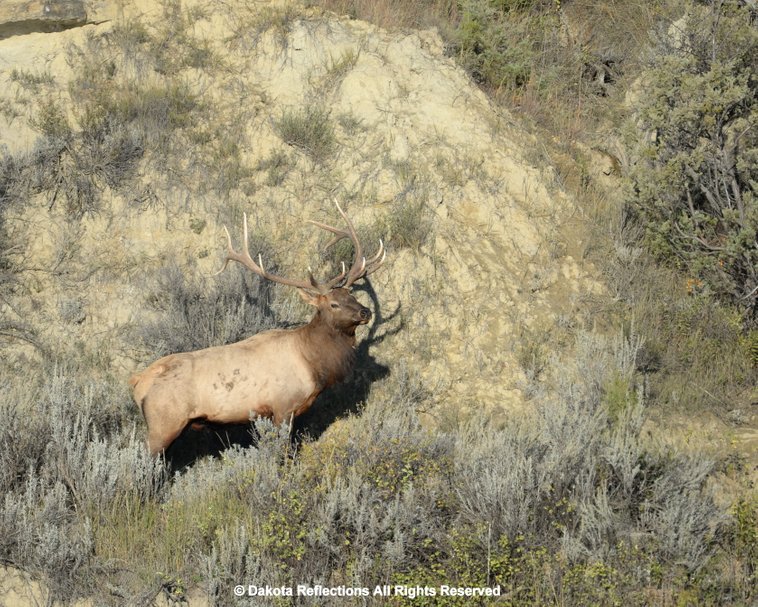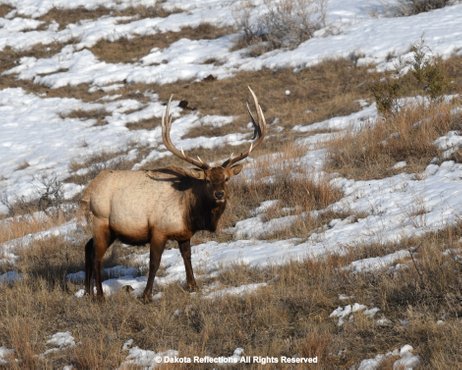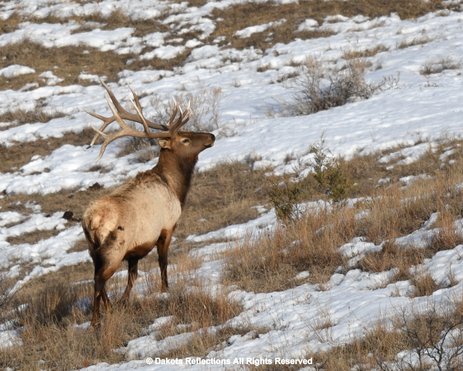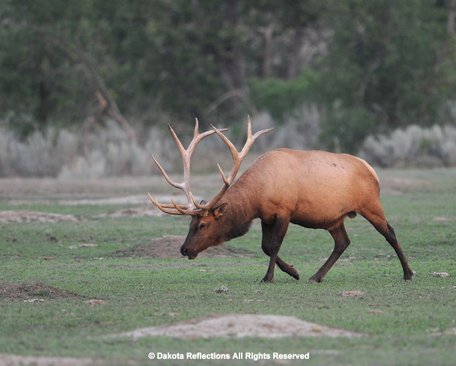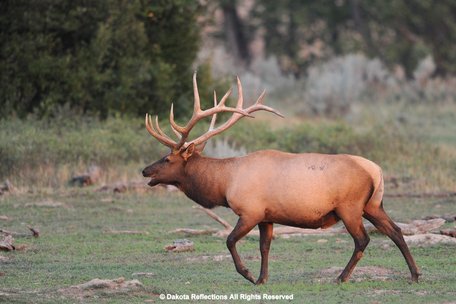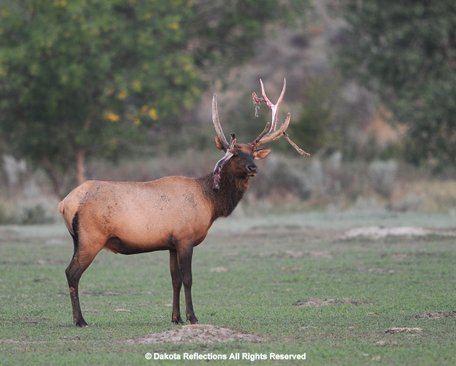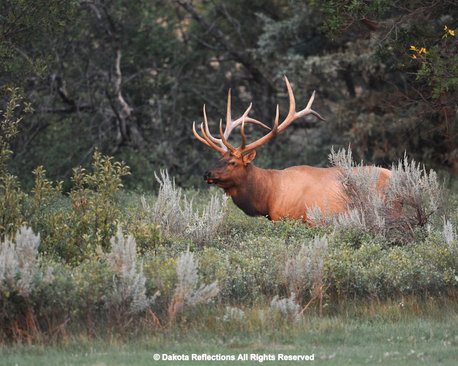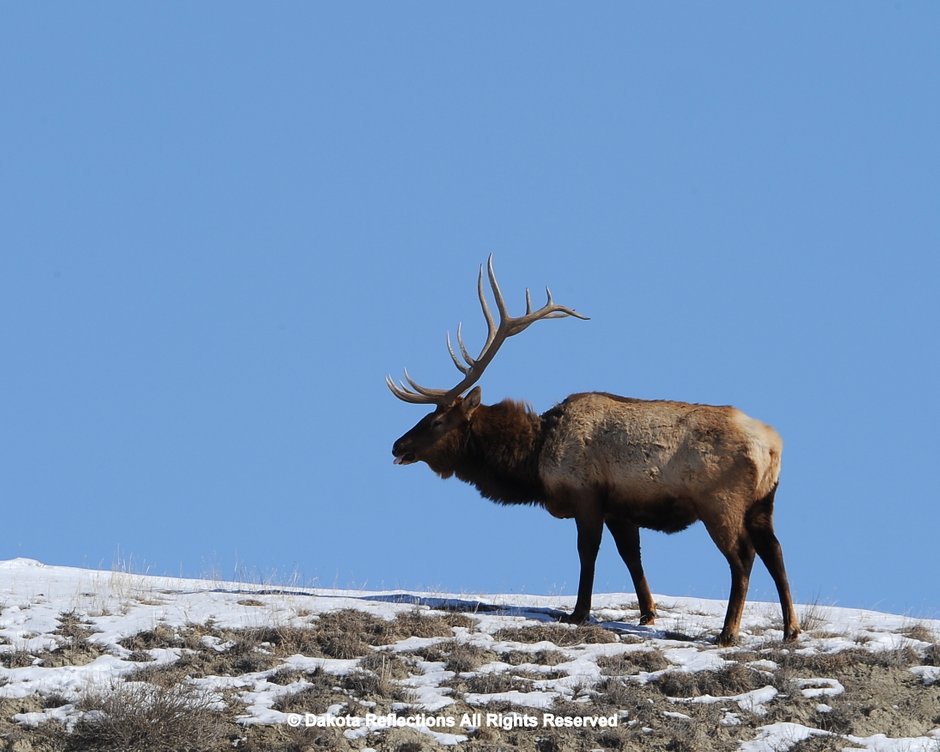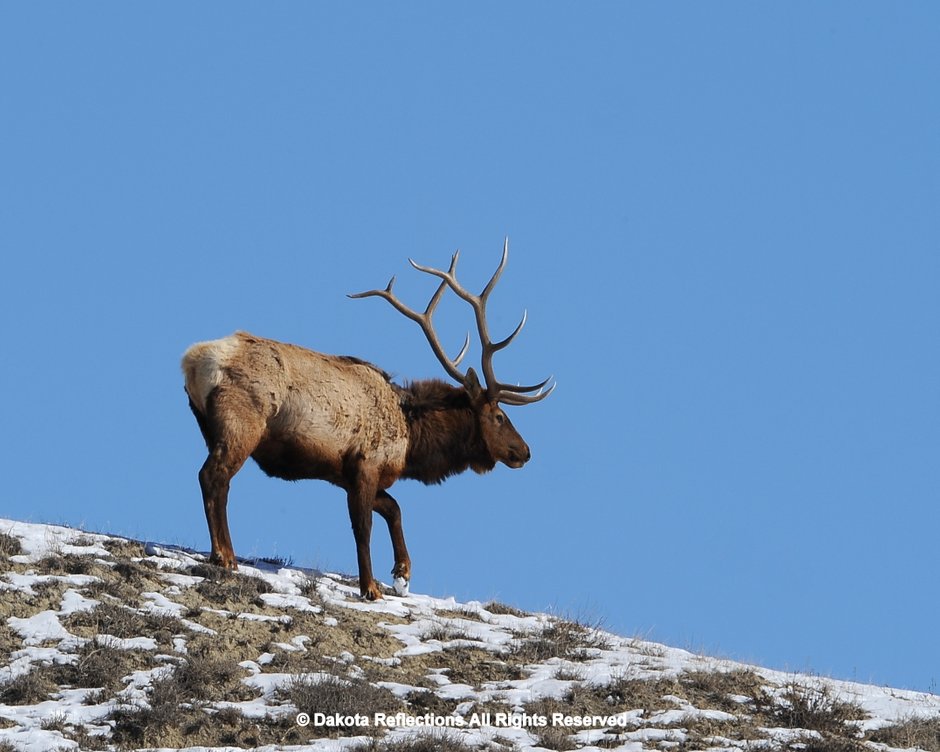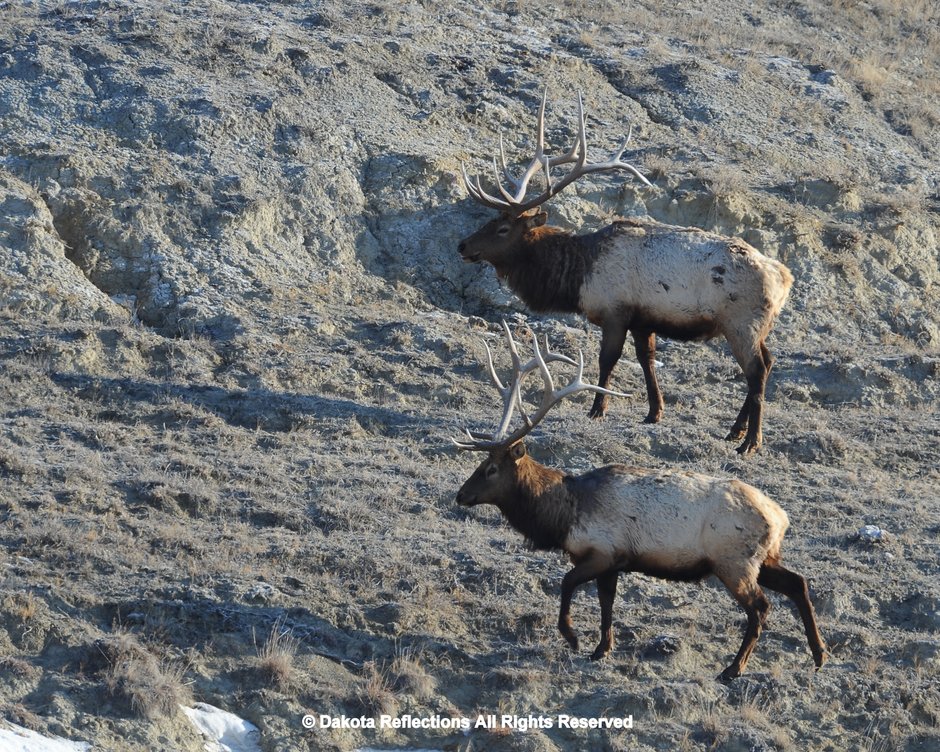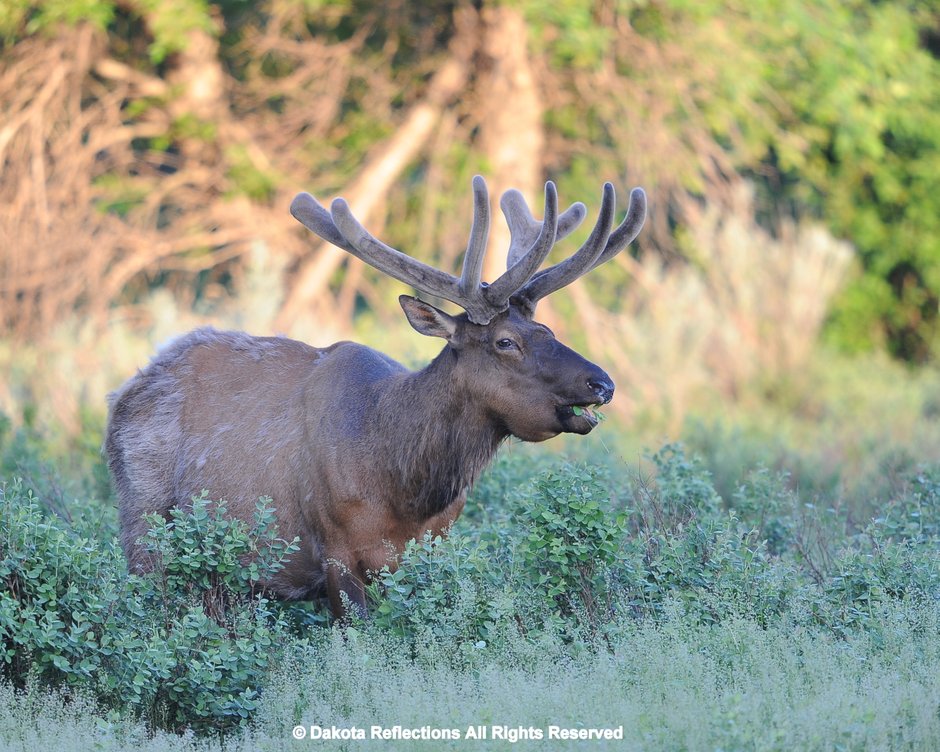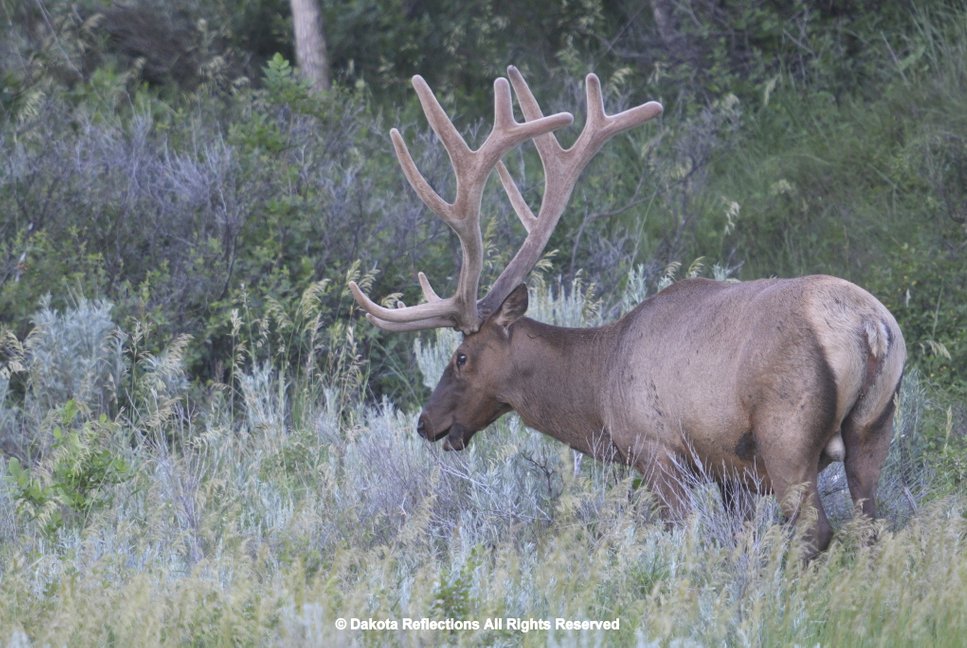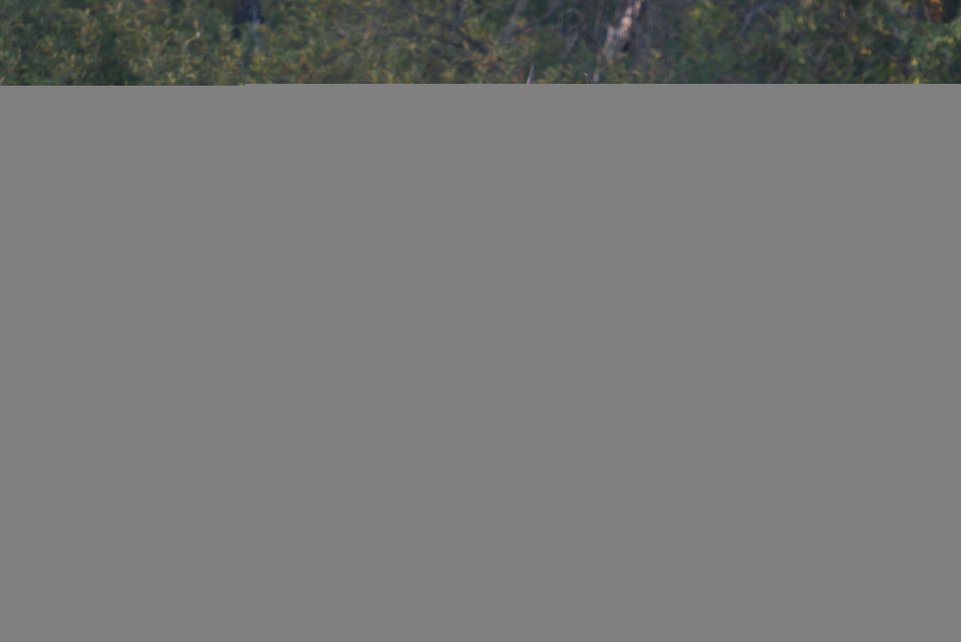Dakota Reflections
Elk along with moose are the largest land mammals in North America. Prior to the arrival of Europeans, elk roamed over most of the United States. Over hunting led to elimination of elk in the North Dakota Badlands by the late 1800s and the 1899 legislature banned hunting of bison, moose, elk and bighorn sheep. Theodore Roosevelt National Park reintroduced elk in 1985 with transfers from the Wind Cave National Park in South Dakota.
Resources at Bismarck Veterans Library
Bauer, E.A. (1995) Elk: Behavior, Ecology and Conservation. Stillwater, Minnesota: Voyageur Press
Geist, V. (1991) Elk Country. Minocqua, Wisconsin: Northwood Press
Elk Fun Facts
- They are found in western and Rocky Mountain states, western Canada and northern Asia, including Siberia
- Breeding occurs in late September and early October with calves born in early June
- Elk can live to be 20 years old
- Elk herds can be very large and number over 200
- Elk migrate to high altitudes in the spring with snow thawing and return to lower elevations in the fall
- Elk antlers are usually shed in March or April
- Males average 700 pounds and females 500 pounds, although both can be larger
- Babies (fawns- usually one, rarely two) are born in the spring, grow quickly and are weaned in the fall
- Elk can run up to 45 mph!
Fun Facts- Are these Antlers or Horns?
- Horns
- Are hollow and grow from the base and made of keratin
- Bison, bighorn sheep, mountain goats, and pronghorns have horns
- Only pronghorn shed their horns annually
- Bison, sheep and goats grow their horns continuously and if they fall off, they don't grow back
- Antlers
- Are made of solid bone
- Deer, elk, caribou, deer, moose have antlers
- Both male and female caribou have antlers, otherwise only male deer, moose and elk have antlers
- Antlers fall off every year. They grow from the tip
2018 Photos
Elk antlers can be nearly 4 feet long and a set can weigh as much as 40 pounds!
Their tongue's are pink!
Elk eat dry grass and browse in the winter and use their hoofs to move snow from the grass
A mature bull usually carries antlers with six points on each side, though some older bulls will carry seven, and occasionally eight points on each antler. A six-point bull is called a Royal. A seven point bull – an Imperial; an eight point or better bull – a Monarch.
Side view of Antlers!
Asymmetric antlers 5 by 6!
Bulls live in bachelor groups or alone
Cows, calves and yearlings live in loose herds or groups
This bull was photographed in mid April 2018 growing new antlers!
By early June 2018 the antlers have grown considerably and are covered in velvet!
In spring and summer when food is plentiful, elk are mainly grazers. They primarily eat grasses, sedges and a variety of flowering plants. On average, an elk eats about three pounds of food per day for every 100 pounds it weighs. That means the average 500 pound cow will consume at least 15 pounds of food every day, while an 800 pound bull will gobble up 24 pounds of food.
https://www.grandviewoutdoors.com/big-game-hunting/elk/what-do-elk-eat/
Nice view of Velvet!
2021 Photos
Elk
Theodore Roosevelt National Park, North Dakota
January 28, 2021
Elk
Theodore Roosevelt National Park, North Dakota
January 28, 2021
Elk
Theodore Roosevelt National Park, North Dakota
January 28, 2021
Velvet on Growing Antlers!
Elk
Theodore Roosevelt National Park, North Dakota
June 4, 2021
Elk
Theodore Roosevelt National Park, North Dakota
June 4, 2021
Elk
Theodore Roosevelt National Park, North Dakota
June 4, 2021
Elk
Theodore Roosevelt National Park, North Dakota
June 4, 2021
Getting a Drink!
Elk
Theodore Roosevelt National Park, North Dakota
June 4, 2021
2022 Photos
In Velvet!
Elk
Theodore Roosevelt National Park, North Dakota
Photo of the Day- May 17, 2022
Elk
Theodore Roosevelt National Park, North Dakota
May 17, 2022
Elk
Theodore Roosevelt National Park, North Dakota
July 9, 2022
Elk
Theodore Roosevelt National Park, North Dakota
July 9, 2022
Bull Elk
Theodore Roosevelt National Park, North Dakota
September 5, 2022
Magestic!
Bull Elk
Theodore Roosevelt National Park, North Dakota
Photo of the Day- September 5, 2022

